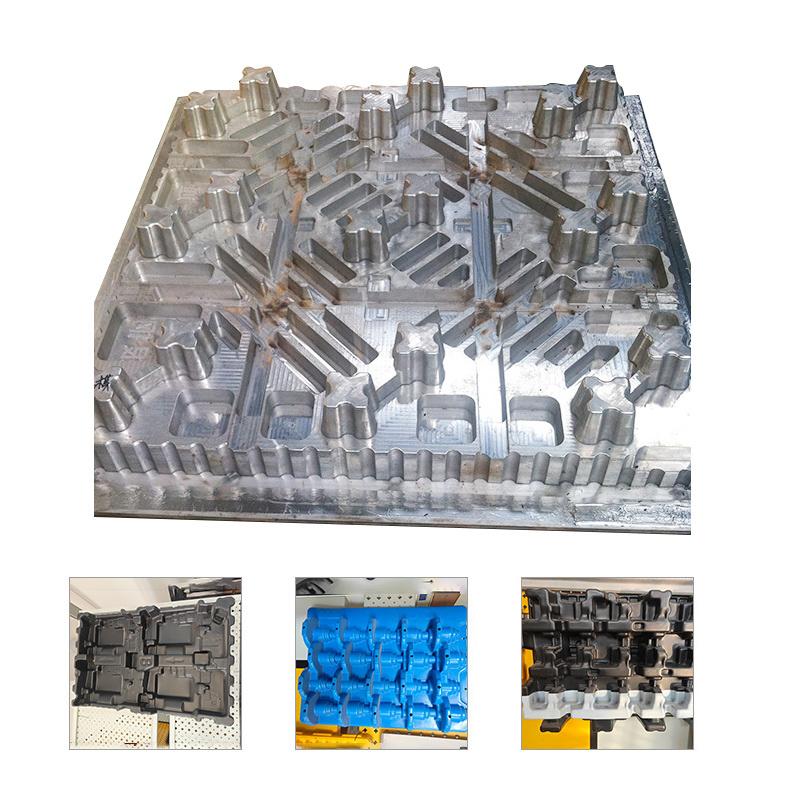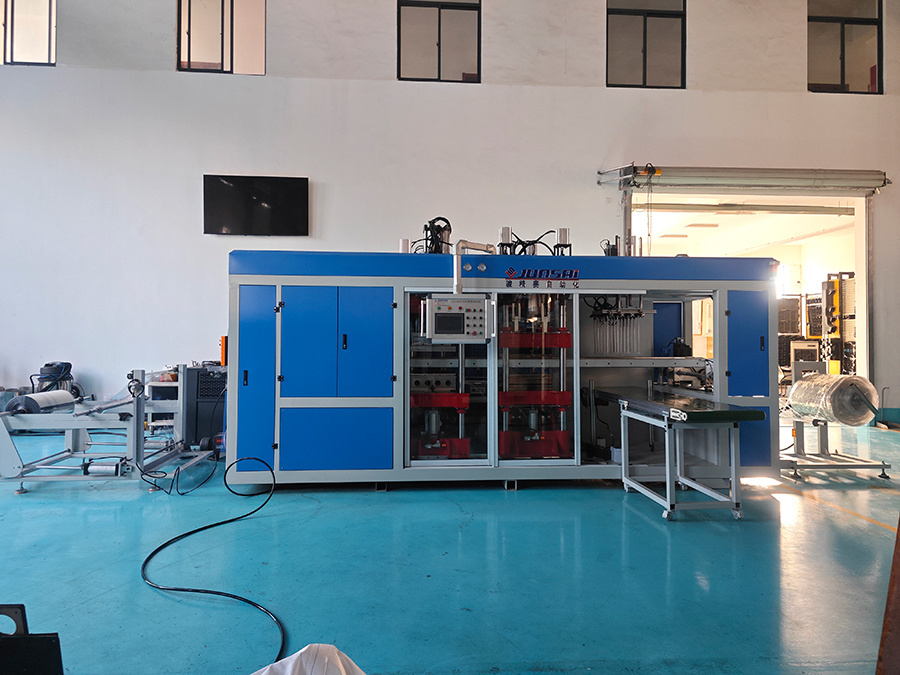Harnessing Data Analytics to Enhance Performance in Renowned Forming Equipment
2025-07-17
Harnessing Data Analytics to Enhance Performance in Renowned Forming Equipment
Table of Contents
Introduction to Data Analytics in Forming Equipment
The Importance of Data Analytics in Manufacturing
Key Data Analytics Techniques for Forming Equipment
Real-World Case Studies of Data Analytics in Action
Challenges in Harnessing Data Analytics
Future Trends in Data Analytics
Harnessing Data Analytics to Enhance Performance in Renowned Forming Equipment
Table of Contents
- Introduction to Data Analytics in Forming Equipment
- The Importance of Data Analytics in Manufacturing
- Key Data Analytics Techniques for Forming Equipment
- Real-World Case Studies of Data Analytics in Action
- Challenges in Harnessing Data Analytics
- Future Trends in Data Analytics for Manufacturing
- Best Practices for Implementing Data Analytics
- Conclusion
- Frequently Asked Questions
Introduction to Data Analytics in Forming Equipment
In the dynamic world of manufacturing, **data analytics** stands out as a pivotal element driving efficiency and innovation. The integration of data analytics into manufacturing processes, particularly in **forming equipment**, allows organizations to optimize production, reduce downtime, and enhance product quality. This article explores how the utilization of data analytics can lead to significant performance improvements in renowned forming equipment.
The Importance of Data Analytics in Manufacturing
Data analytics offers manufacturers crucial insights into their operations. By analyzing data from various sources, companies can identify patterns and trends that inform decision-making processes. The importance of data analytics in manufacturing can be summarized in the following key points:
Enhancing Operational Efficiency
Data analytics provides manufacturers with the tools to streamline operations, which can lead to higher productivity levels. By analyzing machine performance and output, companies can pinpoint inefficiencies and adjust processes accordingly.
Improving Quality Control
With the ability to monitor various parameters during the forming process, organizations can maintain strict quality control. Data analytics enables manufacturers to detect anomalies in real-time, facilitating prompt corrective actions and reducing waste.
Predictive Maintenance
One of the most significant advantages of data analytics is the capability for predictive maintenance. By analyzing historical data, manufacturers can anticipate equipment failures before they occur, minimizing downtime and maintenance costs.
Competitive Advantage
In a highly competitive market, the ability to leverage data analytics can set companies apart. Organizations that harness data effectively can adapt quickly to market demands and innovate their product offerings.
Key Data Analytics Techniques for Forming Equipment
To maximize the benefits of data analytics in forming equipment, manufacturers can employ various techniques. Here, we discuss some of the most effective methods:
Descriptive Analytics
Descriptive analytics looks at historical data to understand what has happened in the past. This technique helps manufacturers make sense of complex datasets and provides a foundation for further analysis.
Diagnostic Analytics
Diagnostic analytics goes a step further by identifying the reasons behind past performance. This technique helps organizations understand why certain issues occurred, allowing them to implement measures to prevent recurrence.
Predictive Analytics
Predictive analytics utilizes statistical algorithms and machine learning techniques to predict future outcomes based on historical data. In the context of forming equipment, this can mean forecasting maintenance needs or production outputs.
Prescriptive Analytics
Prescriptive analytics not only predicts outcomes but also suggests actions to achieve desired results. This technique can be particularly useful for optimizing production schedules and resource allocation.
Real-World Case Studies of Data Analytics in Action
Examining real-world applications of data analytics in forming equipment provides valuable insights into how organizations can achieve significant improvements.
Case Study 1: Automotive Manufacturing
An automotive manufacturer implemented predictive analytics to monitor the performance of their forming equipment. By analyzing data from various sensors, they were able to predict equipment failures accurately. As a result, they reduced unplanned downtime by 30%, significantly increasing production efficiency.
Case Study 2: Aerospace Component Production
An aerospace company utilized diagnostic analytics to understand quality issues in their forming processes. By identifying the root causes of defects, the company improved their product quality and reduced scrap rates by 25%.
Case Study 3: Consumer Goods Packaging
A leading consumer goods manufacturer adopted prescriptive analytics to optimize its packaging processes. By analyzing data on production rates and resource utilization, they were able to reduce costs by 15% while increasing output.
Challenges in Harnessing Data Analytics
While the benefits of data analytics are substantial, organizations may face several challenges when implementing these solutions:
Data Quality Issues
Inaccurate or incomplete data can lead to misleading insights. Ensuring data quality is essential for effective analysis.
Lack of Skilled Personnel
The demand for skilled data analysts often exceeds supply. Organizations may struggle to find the talent needed to interpret complex datasets effectively.
Integration with Existing Systems
Integrating new data analytics tools with existing manufacturing systems can be challenging. Organizations must ensure compatibility to fully leverage data insights.
Future Trends in Data Analytics for Manufacturing
As technology advances, several trends are emerging in the field of data analytics for manufacturing:
Artificial Intelligence and Machine Learning
The incorporation of AI and machine learning into data analytics will enhance predictive capabilities, enabling manufacturers to make more informed decisions.
IoT Integration
The Internet of Things (IoT) is revolutionizing data collection in manufacturing. IoT devices can provide real-time data that enhances analytics and decision-making processes.
Real-Time Data Processing
The shift towards real-time data processing will enable manufacturers to respond to changes in production conditions instantly, leading to improved efficiency and quality.
Best Practices for Implementing Data Analytics
To successfully harness data analytics for forming equipment, organizations should consider the following best practices:
Define Clear Objectives
Establishing clear goals for data analytics initiatives will guide the implementation process and ensure alignment with business objectives.
Invest in Quality Data Management
Prioritize data quality by investing in robust data management systems that ensure accurate, consistent, and accessible data.
Foster a Data-Driven Culture
Encourage a culture that embraces data-driven decision-making at all levels of the organization. Provide training to employees to enhance their data literacy.
Collaborate with Experts
Engage with data analytics experts to leverage their knowledge and experience. This collaboration can provide valuable insights and accelerate the implementation process.
Conclusion
Harnessing data analytics offers tremendous potential for improving the performance of renowned forming equipment. By adopting key analytics techniques, overcoming challenges, and embracing best practices, manufacturers can achieve enhanced operational efficiency, quality control, and predictive maintenance. As the field continues to evolve, staying ahead of trends will be essential for organizations looking to maintain a competitive edge. The journey toward effective data utilization starts today—embracing data analytics will undoubtedly shape the future of manufacturing.
Frequently Asked Questions
1. What is data analytics in manufacturing?
Data analytics in manufacturing refers to the use of statistical and computational techniques to analyze data generated during manufacturing processes to improve efficiency, quality, and reduce costs.
2. How can data analytics improve the efficiency of forming equipment?
By analyzing data related to machine performance and production rates, manufacturers can identify inefficiencies, predict maintenance needs, and enhance overall operational efficiency.
3. What are some common challenges in implementing data analytics?
Challenges may include data quality issues, a lack of skilled personnel, and difficulties in integrating new analytics systems with existing manufacturing infrastructure.
4. Why is predictive maintenance important in manufacturing?
Predictive maintenance helps anticipate equipment failures, allowing for timely interventions that reduce unplanned downtime and maintenance costs, ultimately leading to increased productivity.
5. What future trends should manufacturers be aware of in data analytics?
Manufacturers should pay attention to advancements in artificial intelligence, IoT integration, and the shift towards real-time data processing to enhance their data analytics capabilities.
Keywords:
Related information
Harnessing Data Analytics to Enhance Performance in Renowned Forming Equipment
Harnessing Data Analytics to Enhance Performance in Renowned Forming Equipment
Table of Contents
Introduction to Data Analytics in Forming Equipment
The Importance of Data Analytics in Manufacturing
Key Data Analytics Techniques for Forming Equipment
Real-World Case Studies of Data Analytics in Action
Challenges in Harnessing Data Analytics
Future Trends in Data Analytics
2025-07-17
Exploring the Advantages of Classy Automatic Thermoforming Machines
In the realm of packaging machinery, the classy automatic thermoforming machine stands out as a sophisticated and efficient solution for producing a wide variety of plastic products. These machines are designed to create packaging by heating plastic sheets until they become pliable and then forming them into specific shapes using molds. This process not only enhances the aesthetic appeal of the pa
2025-07-16
Unlocking the Potential: Why a Fancy Blister Thermoforming Machine is Essential for Your Production Line
Table of Contents
Introduction to Blister Thermoforming Machines
What is Thermoforming?
Benefits of Fancy Blister Thermoforming Machines
Enhanced Efficiency in Production
Cost Reduction and Resource Optimization
Improved Product Quality
2025-07-15












